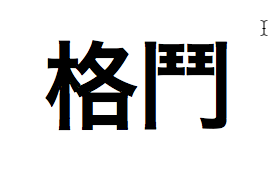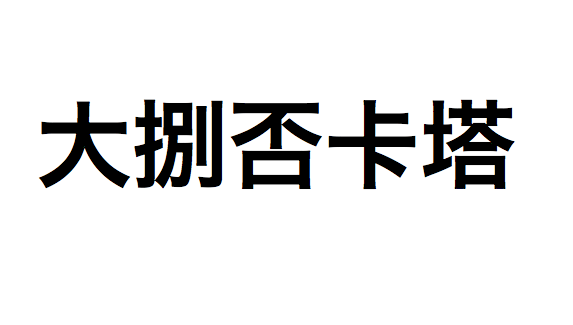Ki! When the word is mentioned it fills the mind with thoughts of wondrous ability, many times considered far beyond the realm of normal human experience. Probably the one personage to pop into the head of the practicing martial artist, when Ki is mentioned, is Morihei Ueshiba, the great master and founder of Aikido.
Read More »Author Archives: susan
The Final Level
The study of the martial arts is not just a study of physical skills, but also the study of philosophy. For too many the physical skills combined with years of competition have simply served to create very contentious people, who are constantly seeking conflict with somebody or other. The current profusion of challenges, both as large contests, and between certain individuals, clearly show that many of our practitioners of martial arts, are not martial artists at all. For to be a martial artist one must know and follow the philosophy of their art, and yet few of these individuals, who are so wrapped up in challenges, seem to even know, let alone comprehend, the philosophy behind their art. This seems to be especially true for those Jujutsuka, practitioners of Jujutsu, who seem to be in the forefront of these current spat of challenges.
Read More »Teaching Grappling: The Combat Way
Many people are interested in teaching grappling skills, but too many of them have only a peripheral knowledge of grappling skill and that from the perspective of sport Judo, which taught techniques developed only for sport, not intended for combat. Now I am sure this supposition needs to be explained from a historical point of view, and the answer is actually quit simple.
Read More »TAI SABAKI NO KATA THE BODY MOVEMENTS OF FORM
It has been acknowledged by most authorities, at least those who actually train in traditional martial arts, that Kata is the most important form of training that exists. While some people get confused about what constitutes Kata, the truth is some of the people who deride it as impractical, actually practice it themselves. One very public figure used to talk about how Kata was not a good form of training for actual fighting, yet in preparation for fighting competition, the person spent many hours 'shadow boxing', which is actually just a spontaneous method of practicing Kata. In all truth, there was a time in martial arts history when all Kata, in all countries, were only extemporaneous, for it was found that freestyle practice developed the freedom of movement and the unrestricted mind necessary for excellence in combat.
Read More »SAY NO TO THE KILLER INSTINCT
Some people say that in order to be a good martial artist or an expert of self defense, it is necessary to possess a killer instinct. Yet the very people who need self defense skills the most are those people who tend towards gentleness and non-violence. Would a person who is truly gentle and peaceful even enter a Dojo, if he/she were actually convinced that he/she would have to develop a killer instinct? Probably not. More important, what needs to be considered, is a killer instinct actually a positive attribute or a deadly attitude that needs to be expunged from a martial artist's personality.
Read More »Odori – The Greatest of All “Secret” Principles
Odori means dance, and has two separate meaning in regard to the Orient. There are Odori which are part of ceremonial religious practices, especially of the animistic faiths of the Orient and in Japan connected to Shinto. There are some dances attached to Buddhist celebrations, such as the Obon festival, when the spirits of the deceased visits their family and friends. These dances have survived as ceremonial rites still associated with celebrations of many religious holidays.
Read More »MARUI KEMPO CIRCULAR BOXING
Kiyojute Ryu Kempo Bugei is a unique martial arts system, in that it recognizes the many influences which took place to create the unique Okinawan Bujutsu. There have been many influences upon the small island, beginning with whatever indigenous fighting style the original settles brought with them, to the twelfth century entry of Minamoto Bujutsu, to the fourteenth century Chinese systematic influences, to the seventeenth century entry of Jigen Ryu of the Satsuma clan, and ending with a renewed interest in Chinese boxing during the late nineteenth century and early twentieth century.
Read More »KOKORO – THE HEART OF A WARRIOR
Yamaoka Tesshu lived from 1836 until 1888 and was one of the most influential martial arts masters to help shape the future of Japan, as well as, prepare the martial arts for inclusion into modern society. Like many martial arts masters Tesshu wrote Doka, way poems, which comprised his philosophy about life and the martial arts. He was extremely talented, being a Zen artist, a statesman, a writer of poems, and practitioner of the martial arts.
Read More »KICKING THE WAY IT WAS MEANT TO BE
When the great Kempo master from Okinawa, Choki Motobu, used to teach kicking to his students, he always stressed that it was necessary to snap the kick back faster that it was thrown out. This was a lesson that James Masayoshi Mitose passed on to his students as well. Unfortunately with the development of tournament Karate, kicks have been modified to be safe and effective for competitive play, which unfortunately has made them less than efficient for self defense.
Read More »KEMPO NO RITSUDO TO NAGARE THE RHYTHM AND FLOW OF THE FIST LAW OF FIGHTING
James Masayoshi Mitose was the first person to teach Kempo in the territory of the United States. His training in Kempo combined the Mitose family art of Kosho Ryu Kempo Jujutsu which was very Japanese in orientation and included training in the Koga method of Ninjutsu. He also received training in Shorei Ryu Kempo Karate of Okinawa, it is believed from his maternal uncle, Choki Motobu.
Read More » Martial Arts Business Magazine Resources for Running Your Martial Arts Business
Martial Arts Business Magazine Resources for Running Your Martial Arts Business



